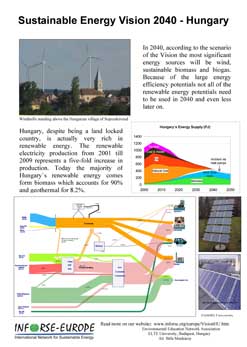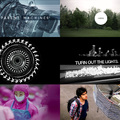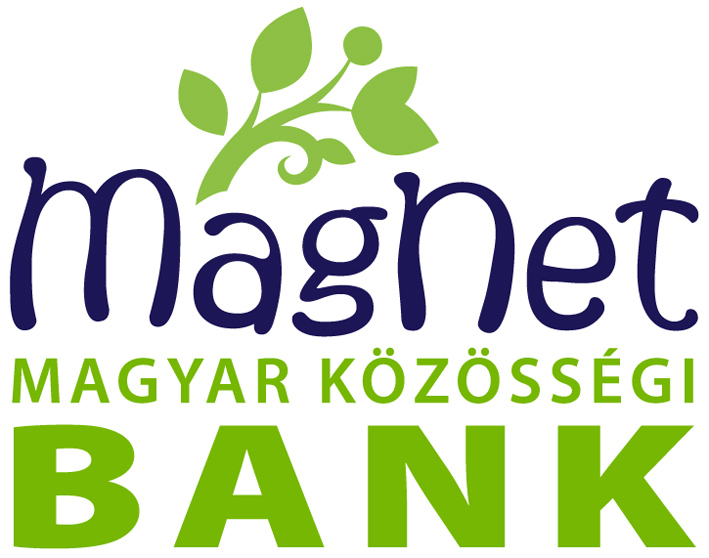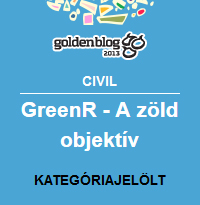Ajánló: fenntartható energia-forgatókönyvek!
2013. március 26-án, kedden az ELTE TTK Környezet- és Tájföldrajzi Tanszék szervezésében Gunnar Boye Olesen dán gépészmérnök (az International Network for Sustainable Energy [INFORSE] szakértője) tart előadást a fenntartható energia-forgatókönyvek készítéséről a Lágymányosi Campus Déli Épületében.
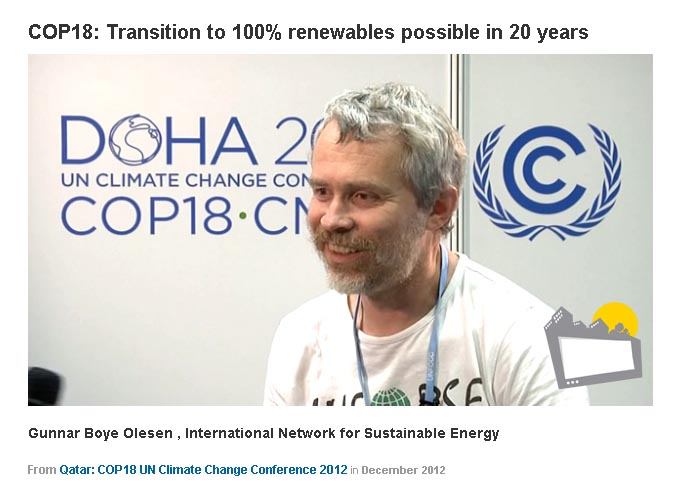
Gunnar Boye Olesen előadásának témája a fenntartható energiarendszerek létrehozása. Lakóhelyén, egy kis dániai ökoközösségben közreműködött a legkorszerűbb energetikai megoldások (pl. közösségi aprítéktüzelés, különféle napenergia-alkalmazások, Stirling-motor) meghonosításában. Kutatási tevékenysége során olyan energia-forgatókönyvek létrehozására törekszik, amelyek megfelelnek a fenntarthatóság kritériumainak. Az általa kidolgozott xls-alapú szoftveres támogatás széleskörű nemzetközi elismertségnek örvend. Az előadás az energiatervezés néhány részletébe avat be.
Időpont: 2013. március 26. 14:00
Helyszín: ELTE Lágymányosi Campus, Déli épület, 1–817 (Budapest, Pázmány Péter sétány 1/C)
Dániában tilos 2013-tól gázzal fűteni az újépítésű ingatlanokban
Dániában 2013 elejétől nem engedélyezett az újépítésű ingatlanokba olaj- illetve gázfűtést telepíteni. 2016-tól a meglévő ingatlanok tulajdonosainak sem szabad új olaj és gázkazánt beépíteni, folyamatosan más fűtési módra kell átállniuk. Ehhez az állam támogatást nyújt.
A cél, hogy teljesen beszüntessék a gáz és olaj alapú fűtési rendszereket. Csak elektromos árammal vagy hőszivattyúval üzemeltethető fűtési rendszereket engedélyeznek a jövőben. Ezt a célt többek között további tengerparti szélerőművek kiépítésével, illetve a biogáz használatának támogatásával kívánják elérni.
A törekvések:
•2020-ig a dán energiafelhasználás 35 %-nak megújuló forrásból kell származnia, manapság ez 24 % körüli érték.
•Az áramfelhasználás felét szélerőművekkel kell fedezni.
•A teljes átállást megújuló energiaforrásra 2050-ig kell elérni.Dánia soha nem üzemeltetett atomreaktort. A 70-es évek olajkrízise után erőteljesen szénerőművek kiépítésére álltak rá. A szénerőműveket most folyamatosan leépítik, a helyükre lépnek a szélerőművek és a biogáz telepek.
Megújuló energia láthatná el Magyarország teljes energiaigényét
Több hazai felsőoktatási intézmény oktatói és hallgatói által jegyzett „Erre van előre!” c. most megjelent kötet egy másfél éves kutatás eredményeit foglalja össze, amely szerint – optimális esetet feltételezve − 2040-re lehetséges lenne akár 100%-ban megújuló energiaforrásokra támaszkodva biztosítani hazánk energiaszükségletét. A kötet letöltése innen.
A kiadvány egy 100%-ban megújuló energiaforrásokra támaszkodó ország képét vázolja fel, kifejezetten a hazai adottságokat és lehetőségeket figyelembe véve. A 23 fős szerzőgárda egy olyan forgatókönyvet állított össze, amely a bürokrácia szempontjából optimális körülményeket feltételez, és elemzéseik szerint elvezethet egy fenntartható, hosszú távon is működőképes energiarendszer kialakításához.
A kötet az ELTE TTK Környezet- és Tájföldrajzi Tanszék kutatójának vezetésével, a Károly Róbert Főiskola és a Szent István Egyetem kutatóinak közreműködésével, valamint az INFORSE-Europe szakmai támogatásával készült el, egyetemi hallgatók aktív részvételével.
Hungarian Sustainable Energy Vision
March 2013: Vision 2040 Hungary 2.0
Source: http://www.inforse.org/europe/VisionHU.htm
The ELTE University Sustainable Energy Research Group is working on a new edition of the Sustainable Energy Vision called "Vision 2040 Hungary 2.0". The new version is based on the feedback received on the original publication "Hungary 1.0", which presented in numerous conferences and lectures. The original publication has version number 1.0, and consequently little corrections and perfections were edited in vision 1.1 and 1.2.
By March 2013, the vision's version 2.0 is under final consultations. The new edition contains new chapters on energy planning and energy transition written by new researchers who joined the project from different fields, such as mechanical and geothermal engineers, economists, psychologist, as well as the vice-president of the Hungarian Chamber of Architects. Simultaneously, the existed chapters were upgraded also. The expected publishing date is in April 2013 at the ELTE University's website. Contact: Béla Munkácsy, munkacsy@elte.hu .

Photo: The ELTE University Sustainable Energy Research Group
October 2011: New Publication
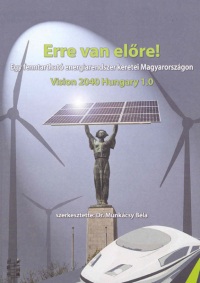
Title: "Vision 2040 Hungary 1.0 - Go Ahead This Way: A Framework of a Sustainable Energy System in Hungary"
155 pp. (in Hungarian).
Published by Environmental Education Network Association (EENA), Hungary. Editor: Béla Munkácsy.
Download it as pdf from the Hungarian Air Pollution web site:
"Erre van Előre - Vision 2040 Hungary 1.0
July 2011: Article on the Vision in Hungarian the Low Carbon Societies Network's Newsletter.
You can Download the Newsletter as pdf file and the article is on page #5.
September 2011: Poster of "Vision 2040, Hungary" - Download Poster as pdf file (184 kb) .
Hungary, despite being a land locked country, is actually very rich in renewable energy. The renewable electricity production from 2001 till 2009 represents a five-fold increase in production. Today the majority of Hungary`s renewable energy comes form biomass which accounts for 90% and geothermal for 8.2%.
The Hungarian "Vision2050" is similar to the vision for EU. It is developed in cooperation with INFORSE-Europe and a an INFORSE-Europe member. The Hungarian INFORSE member is the Environmental Education Network Association (EENA), which also cooperated with a group of University students from the ELTE University. The work was coordinated by Gunnar Boye Olesen (INFORSE-Europe) and Béla Munkácsy (EENA and ELTE University).
The Group's work consisted of:
- Working with a complex excel sheet model, which gives the final scenario with graphical results.
- Estimating Hungary's renewable energy potential.
- Using data from the International Energy Agency by sectors in 1990, 2000, 2005.
- Estimating scenarios by 5 year from 2010 and 2050 based on the historical data, and the renewable energy and energy efficiency potential.
The Sustainable Energy Vision 2050 for Hungary shows that if the country uses its potential in the use of renewable energy sources and the energy efficiency, than the 100 % renewable energy scenario is possible. It is physically possible, but it needs change in regulatory frameworks and consumption attitudes.
4-Factor Energy Efficiency
In 2010, the primary energy supply of Hungary is around 1100 PJ. According to the Vision's scenario this value could be less than 400 PJ by 2050.
This is based on that Hungary can reduce the specific energy demand of household and service sector heating by 75% with respect to the given floor space (Factor 4), but we must admit that this is not the final value because of the presumably growing area of heated floor space. The specific heat and fuel demand of production sector will be also reduced by around 60%.
The specific electricity demand in all sectors, except for transport will be reduced to 45% of today’s value, while the electricity consumption will stagnate until 2050.
As for the personal transport the use of cars will be reduced to 65%, the value of air traffic is going to be only 70% of today’s. These reductions will be compensated by the growth of public transport sector, which is going to be more than doubled, meanwhile the efficiency will be reduced in all sectors, especially in case of cars and buses (to 25-30%) – thanks to the switch to electric engines. Goods transport, related to the value of 2000, will show a growing tendency in activity, except for pipelines, which will reduce to 5% due to the decreasing import of oil and gas. Efficiency will be doubled on this field, as well.
To achieve these energy efficiency, we took into consideration future changes of consumers’ attitude and an expected alteration of regulatory environment. These changes will happen as the price of the conventional energy will increase, but they are also needed to be supported by awareness campaigns, national and EU regulatory frameworks.
Energy Sources
In 2010, the supply of the fossil fuels (natural gas, oil and coal) and the nuclear power are dominant. Among renewables, biomass is the largest, but it still gives only around 3% of the total energy supply.
In 2050, according to the scenario of the Vision the most significant energy sources will be wind, sustainable biomass and biogas. Considering the potentials, the less important will be energy plantation by utilizing 7% of its potential because of related ecological problems. Meanwhile, in case of biogas we will take advantage of 88% of its potential. The main cause of the higher rate of biogas-usage is due to the possibility of widespread use, furthermore it might help solving some problems of waste management.
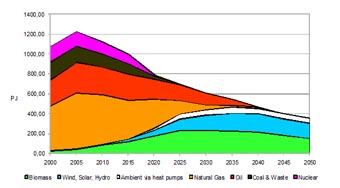
Primary Energy Supply in Hungary according to the Vision [PJ]
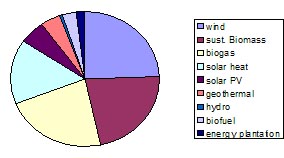
Energy Sources in 2050
Tetszett? Oszd meg!
A bejegyzés trackback címe:
Kommentek:
A hozzászólások a vonatkozó jogszabályok értelmében felhasználói tartalomnak minősülnek, értük a szolgáltatás technikai üzemeltetője semmilyen felelősséget nem vállal, azokat nem ellenőrzi. Kifogás esetén forduljon a blog szerkesztőjéhez. Részletek a Felhasználási feltételekben és az adatvédelmi tájékoztatóban.



